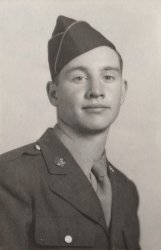
MAY CONTAIN NUTS

Search Shorpy
SHORPY ART

Framed or unframed, desk size to sofa size, printed by us in Arizona and Alabama since 2007. Explore now.
Join and Share
Ad-Free Shorpy
Shorpy is funded by you. Patreon contributors get an ad-free experience.
Learn more.

Recent comments
- Freeze Frame
- Texas Flyer wanted
- Just a Year Too Soon
- WWII -- Replacing men with women at the railroad crossing.
- Yes, Icing
- You kids drive me nuts!
- NOT An Easy Job
- I wonder
- Just add window boxes
- Icing Platform?
- Indiana Harbor Belt abides
- Freezing haze
- Corrections (for those who care)
- C&NW at Nelson
- Fallen Flags
- A dangerous job made worse
- Water Stop
- Passenger trains have right of way over freights?
- Coal
- Never ceases to amaze me.
- Still chuggin' (in model form)
- Great shot
- Westerly Breeze
- For the men, a trapeze
- Tickled
- Sense of loneliness ...
- 2 cents
- Charm City
- What an Outrage
- Brighton Park
Member Photos
The Shorpy
Print Emporium
Print Emporium
Search Shorpy
Search results -- 30 results per page
- Amarillo, Texas: 1943
- View of Amarillo, Texas, taken on Santa Fe R.R. trip in March 1943. South Tyler at SW ... full size. Kodachrome transparency by Jack Delano.
Amarillo Street That is Tyler St. and the road heading west (on the left side of the photo) is 10th located in downtown Amarillo. Do you have any more from Amarillo?
[Thanks for the info! Yes, ... Posted by Dave - 08/05/2012 - 6:34pm -
![Amarillo, Texas: 1943 View of Amarillo, Texas, taken on Santa Fe R.R. trip in March 1943. South Tyler at SW 10th Avenue. View full size. Kodachrome transparency by Jack Delano.
Amarillo StreetThat is Tyler St. and the road heading west (on the left side of the photo) is 10th located in downtown Amarillo. Do you have any more from Amarillo?
[Thanks for the info! Yes, there are more photos by Jack from Amarillo and we'll be posting them in the coming days. - Dave]
ArtBoy, if I had a time machine I'd head straight for the Amarillo Academy of Music and Art. Music! Dancing! Expression! I can only imagine the wonderful cast of characters that must have gathered there.
AmarilloI live close to Amarillo. Things have certainly changed there.
Buildings that are still there...As of the latest round of Google Maps satellite photos:
The Academy of Art & Music building, the "...r-a-way" building, and the building housing Frank's (but not the attached house in the rear) are all still there. The large gymnasium(?) building in the foreground looks to be there still, too.
The building at the left edge that goes with the Texaco sign is the same building in the foreground of this photo ("Firestone" sign showing in the other photo), and it is still standing.
In the upper right center of the photo the domed "Rudy Bauman" building as well as the one in front of it (perpendicular to the street) are both still there. Across the street from those is building housing an old-fashioned service station/mechanic (from the look of it; see the car under the canopy?) that still exists.
Most of the houses seem to have been torn down and replaced with parking lots or other buildings.
10th and TylerThe Texaco station was a large drive-through type operation, with tire sales at the back, office to the right, and fuel sales out of the Texas sun. A similar building is found on the right side of the picture along 10th street there. The smaller station building that has "Rudy Bauman" painted on it stood for years, then became a Mexican food restaurant, then was vacant for a long time. I think part of that building is still there, the domed area. There was a scandal around that restaurant when "weird" bones were discovered in its trash, and the local cat population was for some reason reduced. . . .
The blonde brick building with the curved roof is now ABC Blueprint. They have everything for surveying and blueprinting, including one of the last transit repair shops anywhere. Lots of cool stuff in there when I was younger, and still today.
The house is gone, replaced by parking. The building that says "Franks" is there, now has Mayes Investments in it. The building on the corner is now Blackstone Chinese and Thai Restaurant. Used to be good, but now its just a fast all you can eat lunch buffet.
Note the "new fangled" parking meters - an import from Oklahoma City! Those crazy Okies always find a way to finance their cities on the backs of those least able to afford it! Parking meters in downtown areas are one of the things that helped drive businesses out of downtown areas into the suburbs - why pay to park when you could park for free and go into a newer store too boot? Oh well.
The red brick streets are still in Amarillo in many places. They are now rough and could use some work, but they long outlive their asphalt replacements. Not everything modern is better!
The Music building now has a thrift store on ground level. The whole area is pretty sad nowadays.
ViewpointIt appears this photo was taken from the Santa Fe Hotel on the corner of SW 9th Ave at S. Polk St. That building is still there but is looking kinda sad based on photos from google streetview.
[A larger version of this photo with additional comments about the location is here. -tterrace]
(The Gallery, Kodachromes, Jack Delano)](https://www.shorpy.com/files/images/1a34723u.thumbnail.jpg)
- Amarillo: 1943
- General view of Amarillo, Texas, taken by Jack Delano on his trip via the Santa Fe rails from ... Google Maps and search for First Presbyterian Church , Amarillo, TX. The church is still there but not much else.
This is pretty ... pictures posted so far I made a rough guess at the size of Amarillo in '43 and put it together in My Maps on Google. Anyone who knows ... Posted by Dave - 08/05/2012 - 6:35pm -
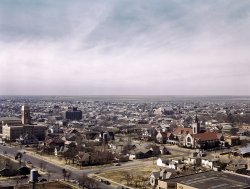
- Lonesome Highway: 1942
- ... most residents pronounce it /dɛf/ DEF.
En Route to Amarillo This is looking northeast on US 60, probably between Hereford and ... Posted by Dave - 03/02/2024 - 11:53am -
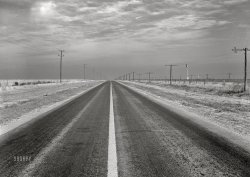
- Aerial Amarillo: 1943
- March 1943. "Amarillo, Texas, general view, South Tyler at SW 10th Avenue -- Santa Fe R.R. ... there.
View Larger Map
Skyspotting Amarillo It's amazing to see a vibrant mixed 1940's neighborhood and the ... parkingscape of today.
Still in today's picture:
Amarillo Furniture Company now ABC Blueprints
Franks now Randy's Shoes ... Posted by Dave - 08/01/2012 - 1:42pm -
![Aerial Amarillo: 1943 March 1943. "Amarillo, Texas, general view, South Tyler at SW 10th Avenue -- Santa Fe R.R. trip." This is the uncropped version of a smaller image posted here five years ago. 4x5 Kodachrome by Jack Delano. View full size.
Frank's creativityHe sure comes up with some imaginative and fascinating window displays.
Academy of Music & Art"Music Dancing Expression"
I thought that was illegal in Texas.
Old Stomping GroundsI spent the first six years of my life exactly here. Fortunately not quite old enough to be seen running away from home in my pedal car in Jack's picture, but old enough that some places well-depicted in that picture are among my vivid early memories.
No A/C !As a Californian I can't imagine living there in the summer.
Dear ShorpyAfter googlemapping I found the location, the photo was taken from the Santa Fe building(now the Potter County tax office) and looks S.W. The intersection you can actually see is SW 10th Ave and S. Harrison St. At least two of the buildings are still there.
View Larger Map
Skyspotting AmarilloIt's amazing to see a vibrant mixed 1940's neighborhood and the mostly barren industrial parkingscape of today.
Still in today's picture:
Amarillo Furniture Company now ABC Blueprints
Franks now Randy's Shoes
???R-A-WAY=Blackstone Cafe/Young Sushi
Academy of Music & Art now AKA Gaylynn's Bail Bonds and others?
Texaco Station now Vacant
Blue Bird Station now Qdesignworks
??? now Computer Shop
The older St. Mary's Cathedral School buildings on the far side of Elwood Park
. . . to put up a parking lot. Comparing this photo to the current view, it's striking how completely the homes near the center of the photo have been replaced by parking lots. And in each of the aerials in Google Earth since 1995, those lots are largely free of cars and people. It would be interesting to know how much of that transformation just happened on its own, and whether it was aided by scorched-earth urban renewal practices common in the 25 years after World War II. A December 1961 news article from the Amarillo Globe Times indicates that urban renewal was hadn't really begun yet.
Two lonely people!I can find a grand total of TWO people in the whole town! One is standing next to a car at the house with the turret directly above the Conoco gas station, and the other is waiting on the corner to the right of the white building with a dome in the center of the picture.
Wood Paneled SedanI am puzzled by the wood paneled sedan at the intersection across from the Conoco station. It looks to be a 1942 Buick, but to my knowledge, they did not make a wood paneled sedan. They did make a station wagon, but no sedan.
[Looks like a taxi - tterrace]
Many buildings still there!A view from the air, today:
http://binged.it/MNr0bT
And of course, the building this shot was likely taken from.
(The Gallery, Kodachromes, Jack Delano, Railroads)](https://www.shorpy.com/files/images/SHORPY_1a34723u.thumbnail.jpg)
- Sunray: 1942
- ... Black I grew up in Fritch, Texas, which is between Amarillo and Borger and not too far from Sunray. My dad worked at the carbon ... Posted by Dave - 01/28/2024 - 2:43pm -
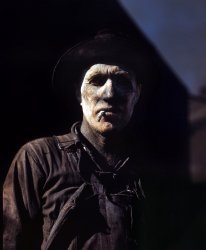
- Amarillo, Texas: 1936
- ... "Dust storm. Note heavy metal signs blown out by wind. Amarillo, Texas." Medium format nitrate negative by Arthur Rothstein. View ... still blows like this I live in Canyon, just south of Amarillo, and work in Amarillo. The wind still blows like this around here . . ... Posted by Dave - 07/30/2012 - 10:52am -
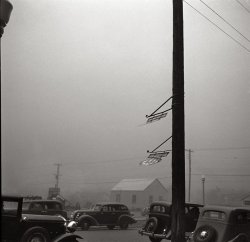
- Amarillo Again: 1943
- Amarillo, Texas, in March 1943. "General view of the city and the Atchison, ... bigger . 4x5 Kodachrome transparency by Jack Delano. More Amarillo here and here .
RR Yd WOW, what a great picture, when ... Posted by Dave - 08/05/2012 - 6:36pm -
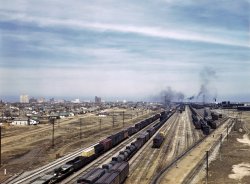
- Amarillo Yardmaster: 1943
- March 1943. Yardmaster at Amarillo, Texas, railyard. View full size. 4x5 Kodachrome transparency by ... Posted by Dave - 08/10/2012 - 4:15pm -
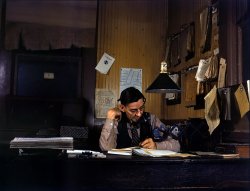
- Amarillo From Above: 1943
- March 1943. "Amarillo, Texas, general view. Santa Fe R.R. trip." 4x5 Kodachrome transparency ... Posted by Dave - 08/05/2012 - 6:37pm -
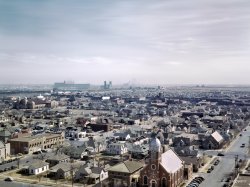
- Pageant of Pulchritude: 1927
- ... Miss Florida, and Miss Douglas may well be blondes. Miss Amarillo could possibly be a redhead, you just can't really tell.
A ... bathing suit (Miss Cleburne), and outstanding hair (Miss Amarillo). I can well understand the assembled crowd on the seawall, soaking ... Posted by Dave - 05/19/2019 - 5:17pm -

- The Upper Hand: 1919
- ... decided to come east with his friend, Sam Houston, of Amarillo, Texas, and see the sights.
Bygone Comics This photo made me ... Posted by Dave - 08/22/2012 - 9:32pm -
![The Upper Hand: 1919 1919. "Ralph E. Madsen, the tall cowboy, shaking hands with Senator Morris Sheppard at Capitol." Harris & Ewing Collection glass negative. View full size.
Perpendicularity
Washington Post, Aug 13, 1919
Texas Giant in Washington
R.E. Madsen, 7 feet 7 inches,
Counter Attraction to Marines.
R.E. Madsen, of Ranger Texas, came to Washington yesterday to see the Marines parade. He tried to join the Leathernecks once and the recruiting officer looked at his 7 feet 7 inches of perpendicularity and said he was too good a target. So he thought he would anyway get first hand information on how ferocious a brigade or two of Marines look, by coming to Washington.
In front of the White House a woman fainted during the parade. Madsen picked her up and took her out of the crowd. When she regained consciousness she looked at the tall cowpuncher and fainted again.
Madsen is perhaps the tallest man in the world and is still growing. He is only 22 years old and was a cowpuncher in Ranger country. Since the discover of oil there has not been much punching to do, so Madsen decided to come east with his friend, Sam Houston, of Amarillo, Texas, and see the sights.
Bygone ComicsThis photo made me think of an oldtime (and possibly politically incorrect) comic of my youth titled "Mutt and Jeff," about two close friends, one of whom was exceedingly tall and the other exceedingly small and their zany antics. And then came to mind the nursery rhyme about "Fat and Skinny" who had a race, all around my pillow case, Fat fell down and broke his face and Skinny won the race." Harmless nonsense in the old days, forbidden and offensive today?
Quite the short lifeRalph Madsen, born in Norfolk, Nebraska, died in 1948 at the young age of 51. He was billed in circus side shows as the world's tallest man and had a couple of nicknames: Sky High Madsen and High Bill Madsen.
No bigger than a minuteMorris Sheppard, the senior senator from Texas, was in office from 1913 until his death in 1941. An ardent Prohibitionist, he was one of the authors of the Volstead Act, and remembered for his conviction that "there is as much chance of repealing the eighteenth amendment as there is for a hummingbird to fly to the planet Mars with the Washington Monument tied to its tail."
And, Hence,the Texas expression: A long drink of water.
Nothing has changed.It appears that even back in 1919 politicians were looking for any opportunity for a photo op.
No pony for himHis horse must've been a helluva animal.
Farkifiedhttp://www.fark.com/cgi/comments.pl?IDLink=4365981
Tall TexThat should be Ralph MADESEN, aka Texas Madesen, aka Sky High Madesen. Here is a link to his single IMDB credit:
http://www.imdb.com/name/nm0534839/
["Madsen" seems to be the preferred IMDB spelling. See link below. - Dave]
http://www.imdb.com/name/nm0535239
(The Gallery, Curiosities, D.C., Farked, Harris + Ewing, Politics)](https://www.shorpy.com/files/images/12702a.thumbnail.jpg)
- A Fork in the Railroad: 1943
- ... on the Atchison, Topeka & Santa Fe Railroad between Amarillo, Texas, and Clovis, New Mexico, as it is ready to start again, after ... Posted by Dave - 05/04/2013 - 3:05pm -
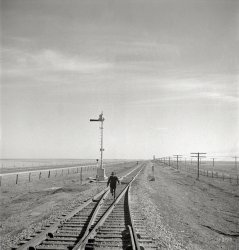
- Jim and Jack: 1943
- ... several items to the museum at some point.
Jeff Ford
Amarillo
(The Gallery, Jack Delano, Railroads) ... Posted by Dave - 10/14/2009 - 10:30am -
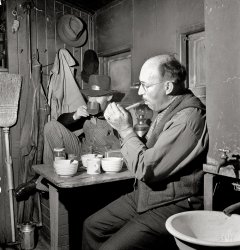
- Westbound Freight: 1943
- ... types of more advanced design. Donated to the city of Amarillo, Texas in 1957, the 5000 is still around, sitting in a park.
Re: ... Posted by Dave - 08/10/2012 - 4:15pm -
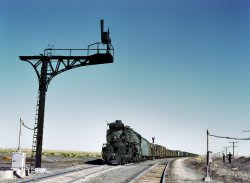
- Pontiac Purveyors: 1936
- ... my uncle's hot pink '56 Pontiac down the brick streets of Amarillo, Texas, with my mother and aunt in the back seat asking, "Do you think ... Posted by Dave - 12/17/2014 - 9:03pm -
![Pontiac Purveyors: 1936 "1936 Pontiacs and salesmen at the Mark Hopkins Hotel, San Francisco." Lined up at the Bottom of the Mark. 8x10 inch Kodak safety negative. View full size.
Third Car is a 1935 ModelThe third car with the headlights attached to fenders and different insignia is a 1935 model. Could this photo have been taken in late 1935 when the 1936 models were introduced?
Fender sittingDon't try that on your new car today, you'll wind up with dents.
Car number 3Is a '35. Guessing that #4 is your base model with no straight 8 engine or emblem, and painted as opposed to chrome grille.
Some are new, some are notVitojo, the two that have the headlights mounted to the fenders are 1935 models; the rest are '36 models. Notice also that on the '35 models, the side elements of the grilles contain vertical bars, instead of the horizontal bars seen on the '36 models.
Cool hood ornamentThat Pontiac hood ornament; the Indian w/the ring around it was very fragile --I wonder how many were intact a year later
Different PontiacsThe third car from the front is a 1935 Pontiac. It is very similar to the '36s. The '35 introduced the first "turret top". The most noticable difference was the front door hinge location, which was moved from the front to the back.
Re: Third car from the front or the backI think the car with the headlights not attached to the nose is a 1935 model while the others are 1936. Someone near my house had a 1936 Pontiac similar to these for sale last year. I would drive by and think how great it would be to own something like that, but boy you would have to know a lot about old cars (and where to get parts!) to maintain something like that.
What no tailfins?I was born just as cars were starting to sprout tailfins, but if asked to draw a car today, one representing all, this is the silhouette that comes most often to mind. A lasting design statement.
I love those grillesI do, I do, I do.
"The wheels will fall off", as Mom would sayMy father, a genius certified by the U.S. Army, loved Pontiacs, even more than the Cadillacs, Studebakers, and Jaguars he'd owned. Perhaps it was the adventure aspect--searching for mechanics in the most remote scenic byways of pre-interstate America. All of us kids remember vividly our made-up games of collecting bottlecaps to while away hours as Dad and the Sinclair greasemonkey reattached the wheelhub of our '56 Chieftan, our '59 Starfire, our '63 GTO or our '66 Bonneville so we could get on with our vacation. It was no wonder that whenever Dad came home grinning with the new one, Mom would say simply, "The wheels will fall off".
Heading home two weeks ago, the turn lane onto my street was blocked by a police cruiser. "An accident", I thought. But no, the officer was merely protectively blocking off traffic for a man in one of the last Pontiacs built, its right front wheel, hub and all, detached and lying over on its side nearby.
Dad finally admitted at age 80 that Mom was smarter.
Nevertheless, one of my fondest memories is as a child of three, driving my uncle's hot pink '56 Pontiac down the brick streets of Amarillo, Texas, with my mother and aunt in the back seat asking, "Do you think this is a good idea?" Thank goodness the wheel didn't fall off.
Pontiac StripesThose long stainless stripes that sweep down over the front of the hood decorated Pontiacs in one form or another, every year for 20 years and became more or less a Pontiac trademark thru' 1955 or '56, second only the the Indian Chief.
Third Car InterlopersThe two Pontiacs with the headlights not attached to the nose are 1935 models. The other Pontiacs, with the lights attached just behind the grille, are from 1936. The 1935 models were the first with the "Silver Streak" running down the hood.
The two cars in the background are 1935 Fords.
Third car from the front or the backHeadlamps not attached to the nose and different insignia. What would be the difference between these and the others? Very stylish cars indeed.
The Silver Streak PontiacsThe two Pontiacs with headlights attached to the fenders instead of the nose are 1935 model year cars. Also note that the third from the back has turn signals on the fenders, this was called the "Improved" model and it also featured a more artistic hood ornament. The hood ornament on the third from the front is the normal 1935 version.
[I believe those are parking lights, not turn signals. -tterrace]
Silver StreakThis was the second year for the brand identifying metal band down the hood and on the trunks of some models and would stay around through 1956.
FascinatingNearly 20 years later my grandfather, father and two uncles would strike exactly the same pose outside of the family business with their company Buicks (Dad's was a cherry red convertible).
(The Gallery, Cars, Trucks, Buses, San Francisco)](https://www.shorpy.com/files/images/SHORPY-168-01.thumbnail.jpg)
- Car Noir: 1977
- ... his wife's pink '57 Star Chief up the old brick streets of Amarillo, Texas. I remember it like it was yesterday. My aunt, my parents, ... Posted by rizzman1953 - 06/23/2012 - 5:45pm -
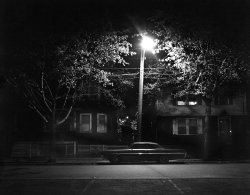
- Bluetooth: 1943
- March 1943. "Amarillo, Texas. Atchison, Topeka and Santa Fe rail dispatcher in the general ... Posted by Dave - 06/01/2009 - 11:27pm -
![Bluetooth: 1943 March 1943. "Amarillo, Texas. Atchison, Topeka and Santa Fe rail dispatcher in the general office." Medium-format negative by Jack Delano. View full size.
Way Out WestLooks like something Wile E. Coyote would get from Acme.
Modern technology?I always find it interesting to see the "technology of the time" in action and to wonder. That man could not possibly imagine what would exist in 2009. Blue Tooth headsets? Trains that run on schedules designed by computers? Excel spreadsheets that are self generated? The mind boggles! High speed trains floating on a cushions of magnets and air?
[The future was more like: The rise of truck freight and the demise of his employer as an independent company; bankruptcy, dissolution and nationalization of the passenger-rail system with the disappearance of the major carriers. - Dave]
Hilarious TitleI laughed out loud when I saw the headline and picture.
Some things are the sameOne of my friends is a dispatcher for a US railroad, and he let me sit in with him one evening. Mostly computerized, of course. Many safety features built in. But they still use the grid paper that you see on this desk, to track train movements.
Train OrdersThis dispatcher is practicing the art of directing rail traffic by the use of train orders, communicating with his order operators by telephone.
The microphone on his chest is activated by a foot pedal while the speaker is an open "party line" to all his operators as well as the offices of yardmasters, wayside telephone boxes, etc. The box in front of him is used to patch in the person he wishes to address. He dictates the orders to one or more operators simultaneously while at the same time writes the orders in his train order book.
To ensure accuracy, each operator reads back the order one by one while the dispatcher underlines each word or number in his book. When the orders are ready to be delivered, the operator (on the Santa Fe) rolls them up and ties them with a string which he attaches to a train order delivery fork.
When the train is approaching his office he will stand a prescribed distance from the track and hold one fork up at the correct height so that the engineman can place his arm through a loop in the string. The operator then takes the second fork and holds it up for the trainman in the caboose or in one of the passenger coaches.
(The Gallery, Jack Delano, Railroads)](https://www.shorpy.com/files/images/8d15329u.thumbnail.jpg)
- Diesel Freight: 1943
- ... paint colors for this locomotive. As a child growing up in Amarillo in the 50s-mid 60s I recall most of the Santa Fe engines I saw had the ... Posted by Dave - 09/23/2013 - 9:53am -
![Diesel Freight: 1943 March 1943. "Flagstaff, Arizona. Diesel locomotive entering town along the Atchison, Topeka & Santa Fe Railroad between Winslow and Seligman." Photo by Jack Delano for the Office of War Information. View full size.
Color scheme You are correct, the blue and yellow was for freight and the silver and red was passenger. That isn't to say it was a hard fast rule, but there was different gearing on passenger locomotives for a higher speed.
SighThere are a bunch of those old girls rotting away in the Union Pacific
yard In Cheyenne, WO.
Very Similar To 103Very similar locomotive to this Shorpy post from years past.
Perfect SolutionDiesels don't need water, which is why early diesel power flourished on ATSF, particularly in the southwest. Locomotives like 2-8-2 3137 in background wouldn't last much longer in the arid divisions across Arizona, but she did have ten more years in her on the eastern divisions, not going to scrap until 1953.
Color SchemeConsidering the Santa Fe emblem and the engine number, I suspect Vonderbees has the correct paint colors for this locomotive. As a child growing up in Amarillo in the 50s-mid 60s I recall most of the Santa Fe engines I saw had the red and yellow paint scheme as shown in this previous Shorpy post rather than the blue and yellow scheme. Currently living less than two blocks from a BNSF line, I see lots of the red/yellow scheme though the red is more orange red than I remember as a child.
Rationing exemptionsEMD was the only manufacturer permitted to build diesel-electric locomotives during the war, even though diesels were what most railroads wanted. Having never built a steam locomotive, they were exempt from the War Production Board's requirement to use only old and well-proven technology. This special exemption gave EMD a huge advantage over Alco and Baldwin after the war. In the end, General Electric was and is the only company able to compete.
Much of their output was allocated to the ATSF, due to the water supply problems already mentioned.
[Electro-Motive was a division of General Motors, not General Electric. - Dave]
I meant that General Electric was and is the only locomotive manufacturer able to compete with Electro-Motive, until recently a division of General Motors.
Re: Color SchemeI always figured the blue and yellow color scheme was for freight trains and the red and yellow was for passenger trains. Does anybody know?
Nice styleThe front of this is how all the passenger diesels looked when I was a kid and I think it's still by far the most attractive design. I don't know why they departed from it.
Lectrogeek68 is basically correctin that General Electric was EMD's only true competitor until their roles reversed in the 1990s, and GE displaced EMD as the dominant locomotive manufacturer in North America. In 2010 Caterpillar purchased what was left of EMD from a consortium of private equity firms who purchased the division from GM in 2005, and is seeking to reverse that.
I honed many a cylinder liner and rough cut more piston castings than I care to remember at EMD's McCook plant during the summers of my undergraduate college years.
At the end of their careersHere is a photograph of some sister locomotives stripped of various parts including their road trucks awaiting scrap.
(The Gallery, Jack Delano, Railroads)](https://www.shorpy.com/files/images/SHORPY_8d27318a.thumbnail.jpg)
- Santa Fe Time: 1939
- ... over his right shoulder. To see a Santa Fe dispatcher in Amarillo from the same era see this Shorpy photo .
Tighten cap. Tip ... Posted by Dave - 03/22/2018 - 10:57pm -
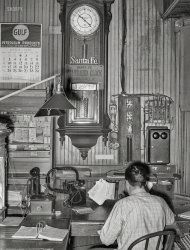
- Plains Grain: 1943
- ... on the Atchison, Topeka & Santa Fe Railroad between Amarillo, Texas, and Clovis, New Mexico." Photo by Jack Delano, Office of War ... Posted by Dave - 04/09/2013 - 10:13am -
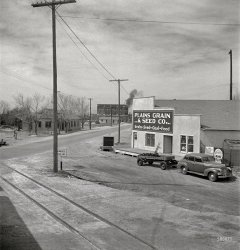
- California Ramblers: 1967
- ... in Texas. We had made a trip from home in East Texas to Amarillo and back in a 1959 Ford Fairlane 500 sedan -- in August! -- and Dad ... Posted by tterrace - 06/06/2019 - 1:56pm -
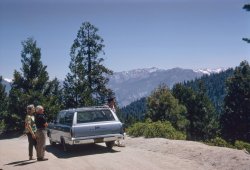
- Noonday Rambler: 1962
- ... Gonna Need a Bigger Station Wagon Made a trip from Amarillo to San Angelo, Texas in the same car, in the very same color. Mom and ... Posted by tterrace - 08/30/2017 - 5:54pm -
![Noonday Rambler: 1962 Glistening from a wash, wax and chrome polish job by sixteen-year-old me, our 1956 Rambler station wagon basks in the sun on the ramp of our garage on Walnut Avenue in Larkspur, California on a summer day in 1962. I'm sure I was paid something whenever I did this, but I actually enjoyed it; in fact, I always volunteered. I recorded my effort this time by clicking off three shots with my Kodak Brownie Starmite, using Perutz black-and-white 127 roll film. Fun auto fact: since we bought it from a Hudson dealer, our Rambler was Hudson-badged; it and Nash badges were discontinued after the 1957 model run. View full size.
About that front tagSo tterrace, what's up with the 56 year on the front tag if this pix was from 62'? Was the front tag not necessary in California then and thus was just historical decoration?
[California supplies yearly renewal tags for the rear plate only. -tterrace]
Had A Friend...who had one of those; I remember that the upper a-arms tended to break, letting the attached front wheel assume strange geometries. He wouldn't get rid of it, though, because the front seat folded down into a bed.
Ah, youth!
WeightDo you know how much that baby weighed?
[2992 lbs. - Super Cross Country 4-door wagon. -tterrace]
PleaseColorize it, it makes me more nostalgic for Grandpa's red and black Buick Roadmaster.
[Better yet, the real colors. -tterrace]
My first driving experience!I learned to drive in one of those 1956 Rambler station wagons, owned by a neighbor. It had a three-speed shifter on the steering column, if I remember correctly.
I had driven a Ford tractor, but driving on a road at speed was WAY different.
That car was a chalky baby-blue and I can't say if the seat folded down. I also had forgotten how pretty that front end was.
I love that emerald-green paint job, tterrace. Class!
Ed Andersonand Bill Reddig were the guys who designed this car, for model years 1956 and 1957. It was offered as one of the first muscle cars in 1957 as the Rebel.
Slogan"Stick out your chest like you owned a Nash."
Billboard copy, sergeant to recruit, 1950s.
Polo Green Hash, and trunnionsWith the Nash/Hudson merger, and the rebadging of cars, the cars acquired the nickname "Hash" for a time. As for this car, paintref.com shows the colors to be Polo Green (code P-75) with a Frosty White top (P-72).
[Ours left the factory solid green; the dealer (Priola Motors in San Francisco) talked my father into having them paint the roof, reasoning that it would help keep the passenger compartment cooler. I remember the white chipping off a bit around the edges over the years, and it never could get a real shine. -tterrace]
PersonFromPorlock's comment on the front end could be related to the trunnions. While most other carmakers used upper and lower A-arms with kingpins, (switching to the use of ball joints around the time this car was made), Nash/Rambler/AMC used a split upper arm with the upright in between (having the coil spring above it), and a trunnion containing a bronze bushing and thrust bearing holding the arm halves to the spring perch above and to the knuckle below. The 1956 models like this one used upper and lower trunnions; later, the lower one was eliminated, replaced by a ball joint, like on our '66 American. AMC continued to use an upper trunnion up until the early 1970s, when they finally went to an all ball joint setup. Periodically lubricated, the trunnions should last indefinitely.
Here's a good treatise on assembly of upper trunnions, specifically for the '63-'64 Ambassador and Classic.
Llicense plate tagThe CA plates in 1956 had the year stamped into the plates, front and rear.
[Had this photo been from the back you'd see a 1962 validation sticker applied between CALIFORNIA and 56 on the rear plate. - tterrace]
We're Gonna Need a Bigger Station WagonMade a trip from Amarillo to San Angelo, Texas in the same car, in the very same color. Mom and us four kids rode with Berniece, the wife of Dad's business partner, and her 6-year-old daughter Glenda. By the time we got to San Angelo, every one of us kids had been bitten by Glenda at least twice before we got to the motel. We spent the whole two weeks of that vacation hiding from Glenda.
(ShorpyBlog, Member Gallery, tterrapix)](https://www.shorpy.com/files/images/noonday_rambler.thumbnail.jpg)
- Cow Town: 1943
- ... on the Atchison, Topeka, and Santa Fe Railroad between Amarillo, Texas, and Clovis, New Mexico." Nitrate negative by Jack Delano for ... Posted by Dave - 09/05/2012 - 6:07pm -
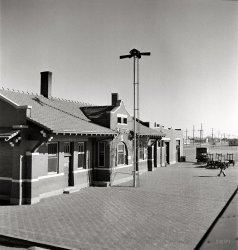
- Low Noon: 1936
- ... afterward was quite a chore. Gene Howe, a writer for the Amarillo Globe News, claimed that the dust storms were healthy and invigorating ... Posted by Dave - 08/18/2008 - 3:41pm -
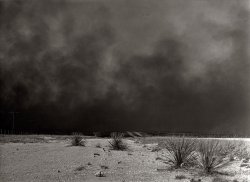
- Linescape: 1939
- August 1939. "Great Plains and highway north of Amarillo, Texas." Medium format nitrate negative by Dorothea Lange for the Farm ... Posted by Dave - 11/01/2020 - 4:04pm -
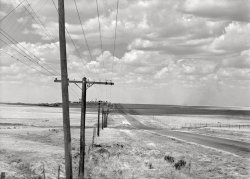
- Floyd's Place: 1938
- ... FSA.
Floyd's Place I found one in Seattle, in Amarillo, in Oblong (Ill.) and in Tennessee. Wish I could find the one in ... Posted by Dave - 01/10/2008 - 8:55pm -
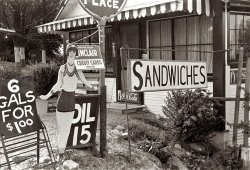
- League of Nation: 1917
- ... in general attended the game.
Marvin Jones , of Amarillo, Tex., doesn't like Republicans. He defeated his Republican opponent ... Posted by Dave - 08/22/2012 - 8:38pm -
![League of Nation: 1917 1917. Washington, D.C. "Congressional baseball game. President and Mrs. Wilson." Harris & Ewing Collection glass negative. View full size.
Donkey Kicks Elephant
'Donkey' Kicks 22 to 21
Wilson Tosses the Sphere
The Democratic donkey had a kick in all of its figurative four legs yesterday. He won the annual congressional baseball game from the Republicans by a ninth-inning rally - won it after the President of the United States had given up hopes for his party and returned with Mrs. Wilson to the White House.
The score was 22 to 21, but, despite the fact that 43 men crossed the counting board, it was the most exciting congressional game for years. The entire proceeds are to go to the Red Cross, and in addition to the sum realized from the gate receipts, hundreds of dollars more were obtained from contributions and from the sale of score cards.
President Wilson and Mrs. Wilson sat through eight innings of the game. he was cheered when he caught a ball and threw it out to the Umpire Clark Griffith before the game started. In the seventh inning, Representative Sydney Mudd, pitcher for the Republicans, drove a foul ball into the presidential box, which Mr. Wilson barely managed to dodge.
Vice President Marshall sat in a box behind the catcher and Speaker Champ Clark was perched far back in the grand stand, and rooted for the Democrats. Members of the diplomatic corps, cabinet members, army and navy officials, members of Congress, and officialdom in general attended the game.
Marvin Jones, of Amarillo, Tex., doesn't like Republicans. He defeated his Republican opponent in the 1916 election by 30,000 majority and defeated the Republicans yesterday almost single handed. Seven times Jones faced Pitcher Sydney Mudd and seven times he drove out ringing base hits. Four times the Texan led rallies which lifted the Democrats out of the slough of despond. He stole five bases, and once he took a lead off base in order to draw a throw and give a Democratic runner a chance to score.
...
Umpire Clark Griffith had a busy day. In the eighth inning McClintic tackled Farr in football style to prevent him from scoring and Jones tagged the Pittsburgh representative. When the men arose Griffith waved Farr across the counting station and the Democrats gathered around Griffith and inserted some remarks into the record.
...
In the line-up were the following: Democrats: Jones, of Texas, third base; Bankhead, Alabama, left field; [Pat] Harrison, captain, short stop and pitcher; Nicholls, South Carolina, center field; McClintic, Oklahoma, catcher; Rouse, Kentucky, first base; Webb, North Carolina, pitcher and shortstop; Whaley, South Carolina, second base; Sears, Florida, right field; Mr. Harrison concluded to be pitcher before the game was over, and being captain, Mr. Webb had to retire, much against his will.
Republican line-up: Miller, Minnesota, captain, shortstop; Morin, Pennsylvania, first base; Mudd, Maryland, pitcher; Johnson, South Dakota, catcher; Sanders, Indiana, center field; Ireland, Illinois, left field; Bacharach, New Jersey and Elston, California, third base; Vestal, Indiana, right field; Norton, North Dakota and Kalaniaole, second base.
Washington Post, July 1, 1917
I laughed, I criedDave, you have out-done yourself in the clever title department with this one.
Party FoulOne wonders if Congressman Mudd didn't actually take aim for Wilson. The election of 1916 had been a very close and divisive race!
On a side note, Wilson was a former ball player himself, having been forced to quit because of frail health, and I have read somewhere he was the first president to attend a World Series game.
(The Gallery, D.C., Harris + Ewing, Politics, Public Figures, Sports)](https://www.shorpy.com/files/images/09154a.thumbnail.jpg)
- Eastbound Freight: 1943
- ... an eastbound freight on the Santa Fe Railroad between Amarillo and Clovis, New Mexico." Medium-format negative by Jack Delano for the ... Posted by Dave - 06/13/2015 - 11:21am -
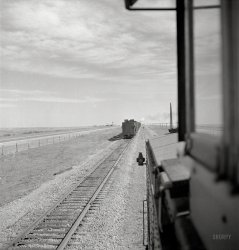
- Long Train Going: 1943
- ... on the Atchison, Topeka & Santa Fe Railroad between Amarillo, Texas, and Clovis, New Mexico." One of hundreds of photos documenting ... Posted by Dave - 03/20/2013 - 1:46pm -
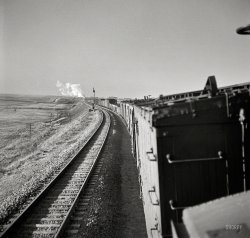
- Wayne Crouse: 1940s
- Wayne Crouse in Amarillo, Texas, circa 1940s. Portrait by Gray Studios of Amarillo. Gray Studios was opened in 1910 by Claude Gray and is still in ... Posted by historic-kate - 06/14/2018 - 9:32am -
